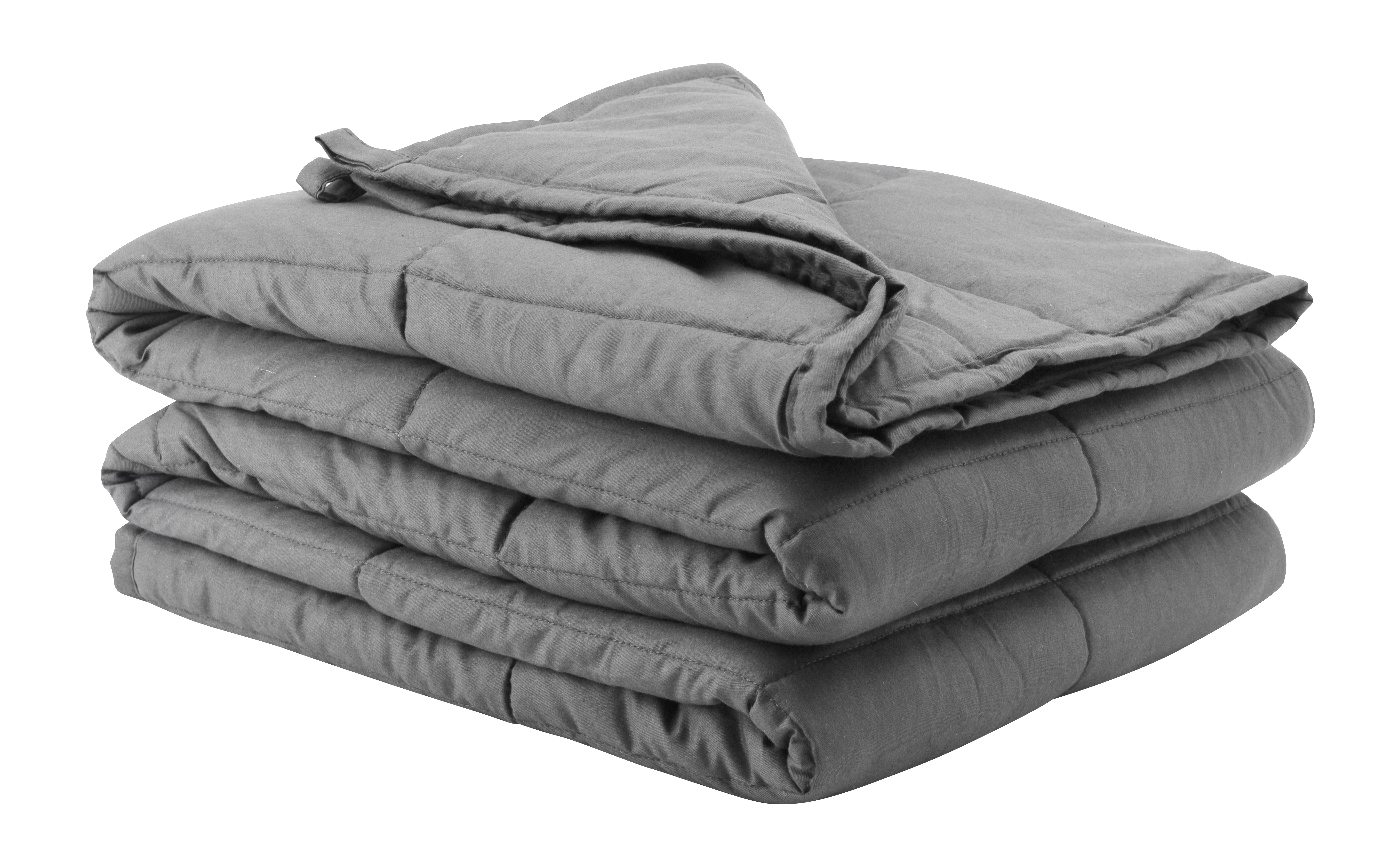Weighted blankets have become very popular in recent years due to the many health benefits they can provide.
Considered to be a therapeutic tool, weighted blankets can promote relaxation and improve sleep quality. They’re also heavier than standard blankets, as they are typically filled with small beads or pellets to add extra weight.
What is a weighted blanket?
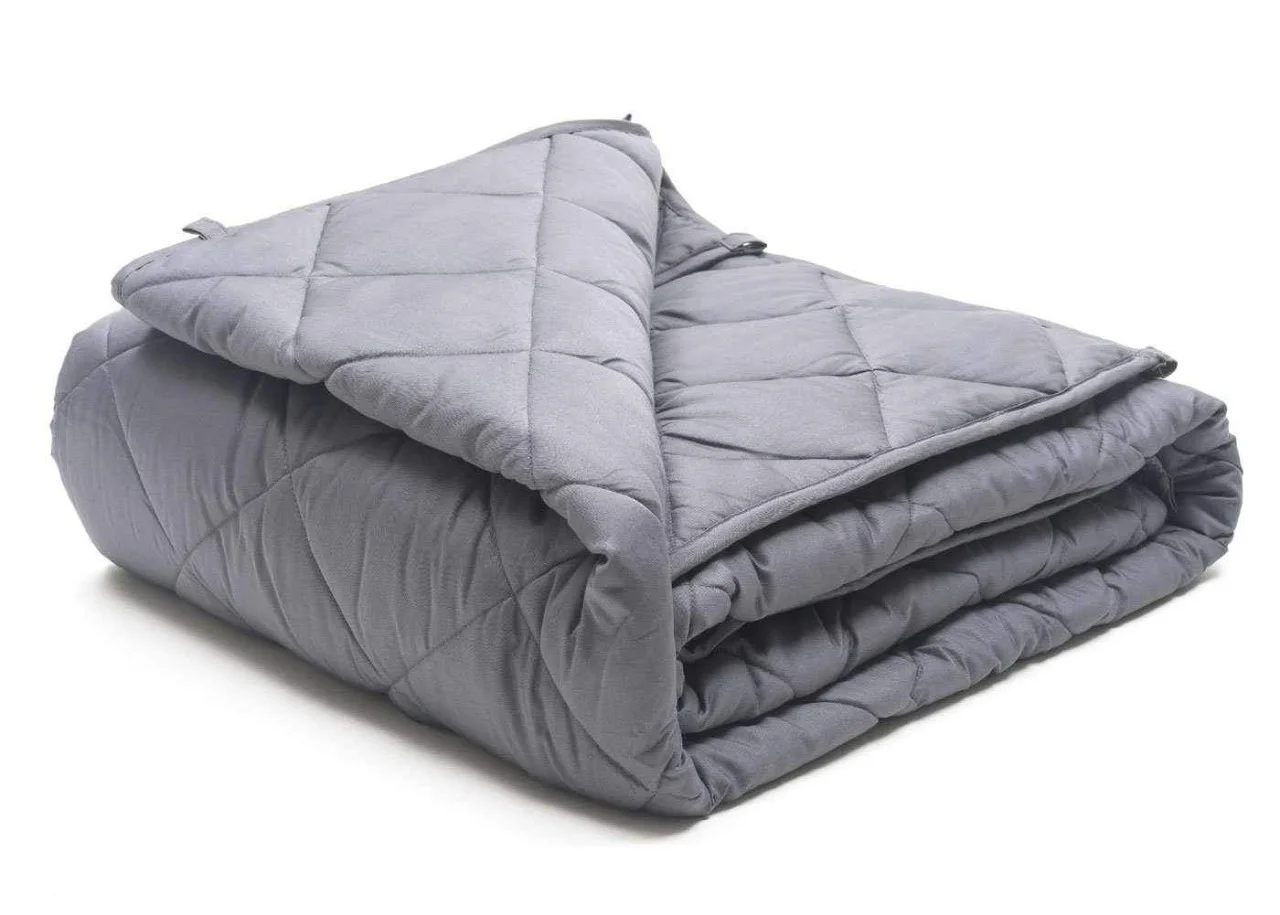
Weighted blankets look like normal blankets, except they’re much heavier, as they weigh from 5 to 30 pounds.
There are mainly two types of weighted blankets: the duvet style, which is filled from the inside with plastic beads and pellets to add extra weight, and the knitted style, which is woven together with heavy fabrics to be heavier than normal blankets.
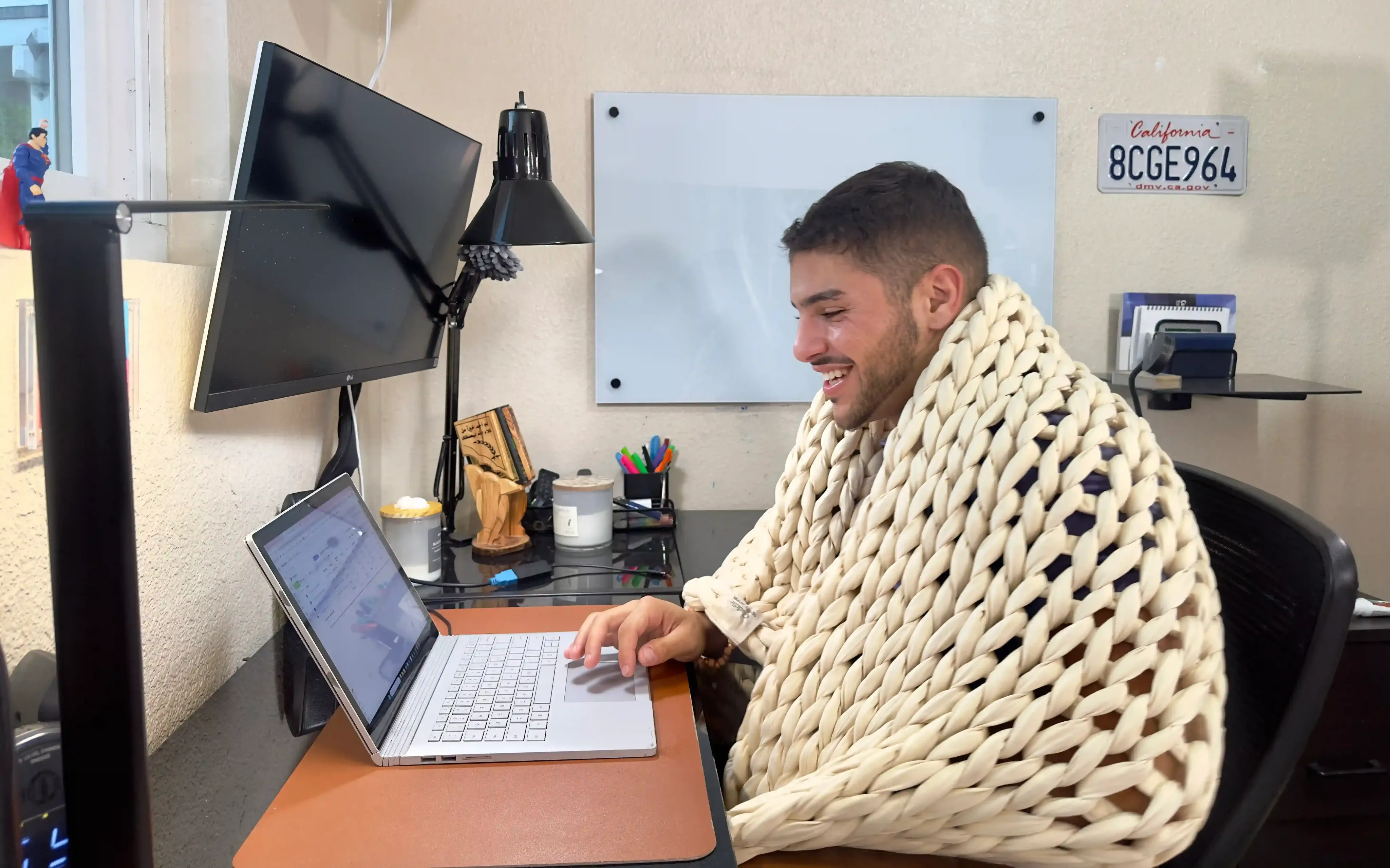
The point of the weight in weighted blankets is that it imitates a therapeutic technique called deep pressure therapy, which has many physical and mental benefits for your body and mind.
How do weighted blankets work?
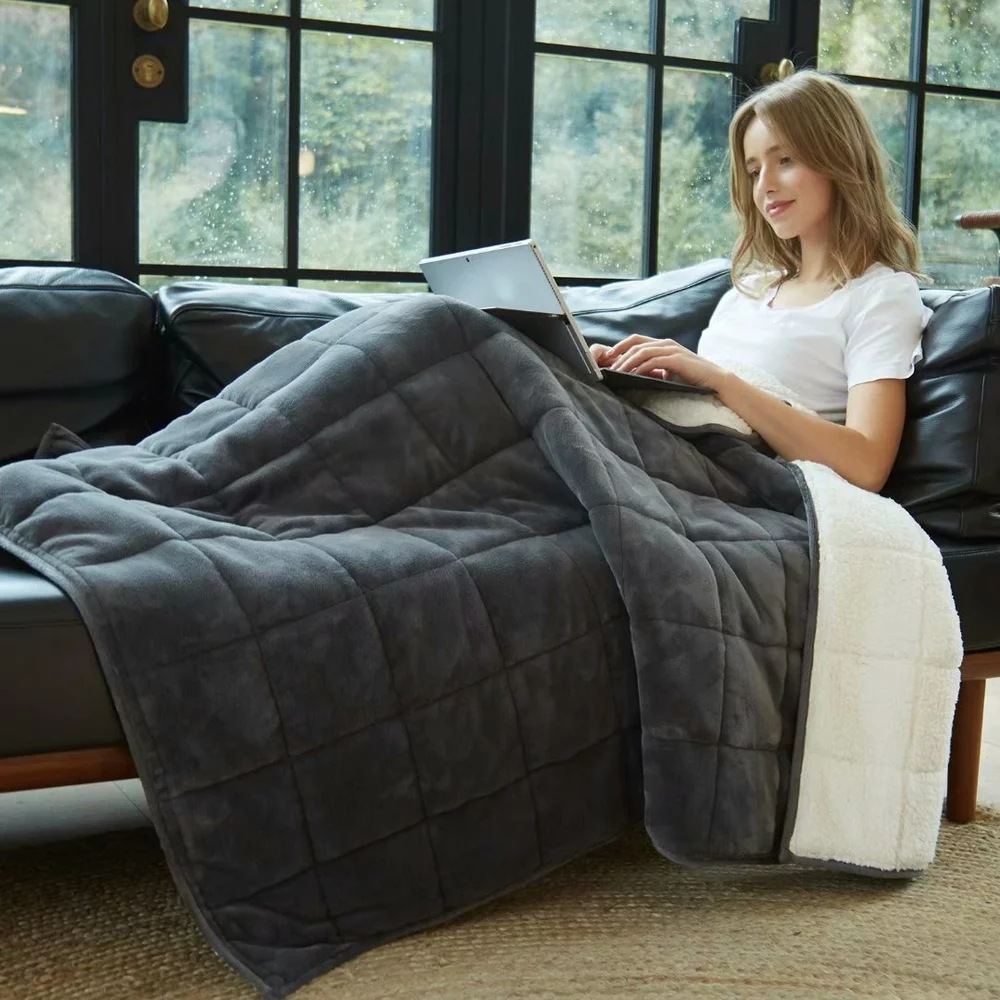
When a person uses a weighted blanket, the light pressure from the weight aids in activating the body's sensory receptors. This stimulation triggers the release of neurotransmitters like serotonin and dopamine, which are known to regulate mood and promote feelings of relaxation and well-being.
Additionally, the pressure from the blanket can help to reduce levels of cortisol, a stress hormone that can interfere with sleep.
The weighted blanket’s weight has a grounding effect on the body. This can be especially beneficial for individuals who experience anxiety or have difficulty falling asleep.
The deep pressure the weighted blanket offers can help calm racing thoughts and give a feeling of safety and comfort. This can lead to deeper, more restful sleep.
Benefits of Weighted blankets
Improved Sleep
Studies show that people who struggle with sleeping saw a great improvement when they started using weighted blankets, as it increased the production of the melatonin hormone, which promotes sleeping, and created a snug and secure feeling that helped them fall asleep much quicker.
Ease Anxiety
Weighted blankets are also known as anxiety blankets because of how beneficial they are for anxiety, as the snug feeling created by the heaviness of the weighted blanket mimics the feeling of being hugged or held by someone, which relaxes your brain and calms the nervous system, which in turn eases your anxiety.
Reduces Movement
Some people tend to fidget a lot and move while they’re asleep, which can disrupt their sleeping sessions, but weighted blankets limit the amount of your tossing and turning throughout the night, which ensures a more restful night's sleep.
Extra Warmth
One of the benefits of a weighted blanket is that If you live in a cold climate all year round and you’re looking for a blanket to keep you warm during the cold nights, then weighted blankets are one of your best options. They also include many cooling features for hot sleepers to prevent overheating.
Pain Relief
Weighted blanket benefits also extend to relieving the body from pain, as deep pressure therapy sends signals to the nervous system so it can relax, which eases the severity of the pain. That’s why it’s recommended for people who have just undergone medical surgery.
Disadvantages of weighted blankets
Price Range
The price range of weighted blankets is typically higher than that of regular blankets and quilts because they're weighted and have all the added benefits that come with them, so if you’re on a tight budget, weighted blankets might not be for you.
Not Safe for Babies
It’s not recommended for kids under the age of 3 or infants to use weighted blankets, as they won’t be able to breathe properly; moreover, they could get trapped inside them, which presents a health hazard for them.
Harder to Pack While Traveling
When you’re traveling, you’re going to most likely pack the lightest items you have as they’re the most convenient to carry around, and a weighted blanket doesn’t fit that description as it’s very heavy and bulky and won’t easily fit in a traveling bag.
Risk of Suffocation
One of the main concerns regarding the use of weighted blankets is the potential for suffocation or restricted movement. The added weight can make it difficult for individuals, especially children or those with mobility issues, to move freely or remove the blanket if needed.
Overheating
The added weight of the blanket can increase body heat retention, leading to discomfort or even overheating, especially for individuals who naturally sleep hot. It is crucial to choose a weighted blanket that is made from breathable materials, such as cotton or bamboo, to enhance airflow.
Construction of weighted blankets
Outer Fabric
- Cotton: Cotton is known for its durability and versatility, which is why it’s used in many bedding products. It’s also very affordable and budget-friendly, which makes it a popular choice for many.
- Fleece: Fleece material is one of the best materials for weighted blankets, as it’s a breathable material that promotes airflow, which is especially important in the case of weighted blankets because they could cause overheating due to their heaviness.
- Flannel: Flannel is similar in texture and feel to cotton, but it’s more breathable and will prevent any chance of overheating or sweating during the night.
- Minky: Minky is one of the most durable, which makes for the best-weighted blankets as it’s made from polyester fiber, which enhances the feel of the blanket and makes it very soft to the touch.
- Bamboo: Bamboo is a great option for people with sensitive skin as it’s hypoallergenic, and it won’t trigger any allergic reactions in people who are prone to allergies.
Inner Layer and Weighted Material Pockets
The inner layer of a weighted blanket plays a crucial role. It features pockets that evenly distribute the filling material and determine how heavy the blankets are, ensuring a consistent weight sensation throughout. For optimal comfort during use, this inner layer should be crafted from a soft and breathable fabric.
Cotton and bamboo are popular choices for this purpose, as they are both hypoallergenic and gentle on the skin. Durability is another key consideration. The inner layer needs to withstand regular use and washing without compromising its softness or effectiveness in distributing weight.
Filling Material
- Glass beads: Glass beads are a hypoallergenic and eco-friendly material that can be used in weighted blankets as an alternative to plastic pellets. They’re easy to wash and dry, as they can be washed in the washing machine without worrying about your weighted blanket being damaged.
- Steel Beads: Steel beads are one of the most common materials for weighted blanket filling; they all have a uniform shape that distributes the weight evenly; they can be washed in the washing machine; and they’re very durable; however, they can be a bit noisy when they move.
- Grains: Some types of grains, such as dried beans, can be used as a filling material for weighted blankets, as they’re cheap and will make the weighted blanket much more affordable; however, grains are not the most durable material as they can disintegrate with time and usage, which will make the blanket lighter, and the effect of it will decrease.
- Pebbles: Some types of weighted blankets include pebbles as their natural material, which is very cost-effective, but the biggest drawback for pebbles is that they’re not all the same sizes and shapes, which results in an uneven weight distribution.
- Sand: Not the most used material as a filler for weighted blankets, but some models of weighted blankets do include sand as a filling, and the reason why it’s not used as much as other materials is that it’s prone to clumping when washed, as well as it could create a huge mess if the blanket was punctured.
Finishing
- Double Stitching: Double stitching finish refers to a sewing technique used to reinforce the seams of a weighted blanket. Due to the additional weight, the seams of a weighted blanket can be subjected to more stress and strain than a regular blanket. This is where the double-stitching finish comes into play. By sewing two parallel lines of stitching along the seams, the double stitching finish adds extra strength and durability to the blanket.
- Quilting: The quilting finish is essential in ensuring that the weighted elements are evenly distributed throughout the blanket, preventing them from shifting or clumping together. This finish involves sewing through both the top and bottom layers of fabric, creating quilted lines or patterns that help secure the weighted filling in place.
- Edging: Edging finishes involve adding a border or trim around the edges of the blanket to provide a clean and polished look. The purpose of the edging finish is not only aesthetic but also functional, as it helps to secure the filling material.
Who should use weighted blankets?
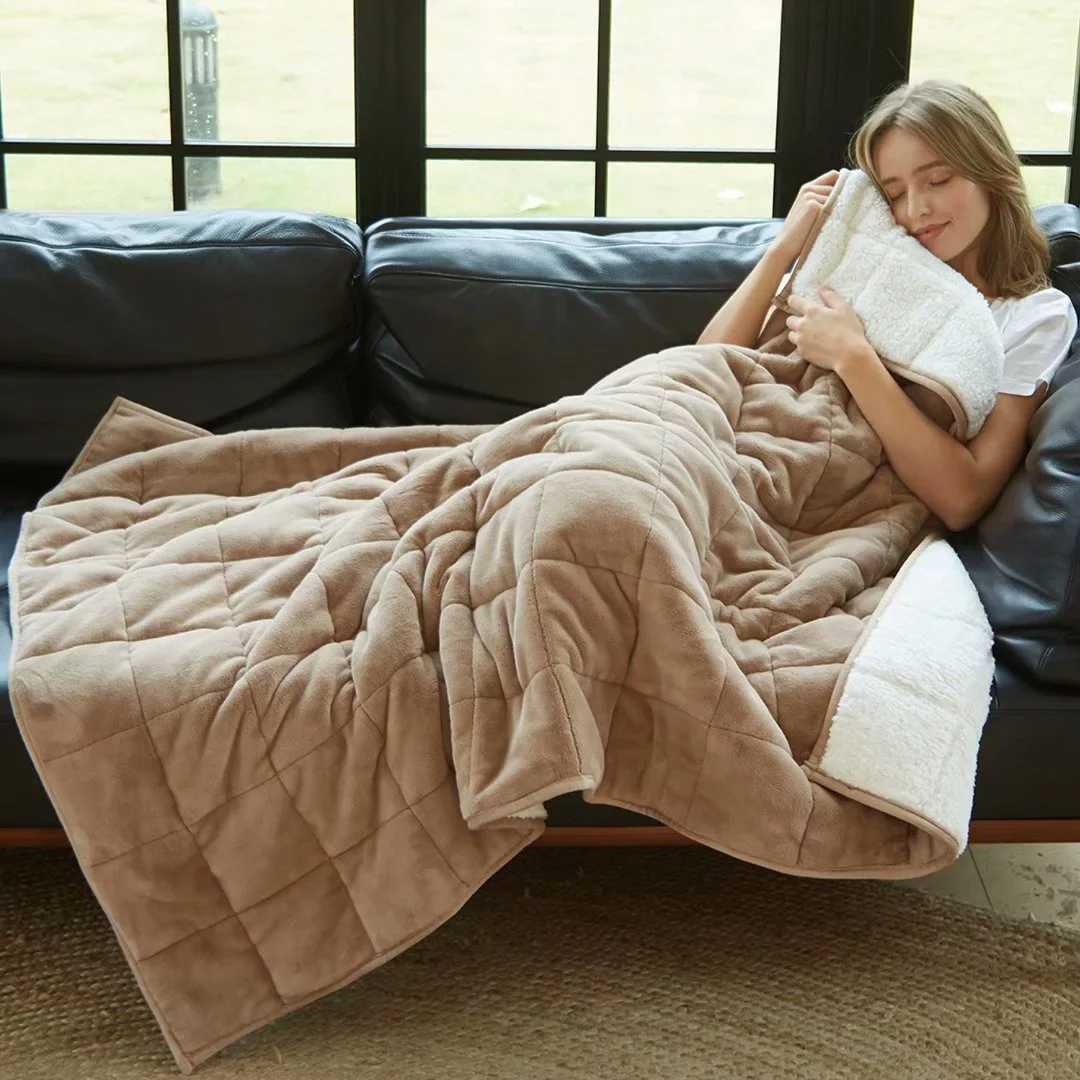
Anxiety
Many people who struggle with anxiety disorder find trouble falling asleep easily, and the lack of sleep only makes their anxiety worse, but weighted blankets provide a deep-pressure therapeutic technique that promotes deep sleep and relaxes your nervous system to help you get better sleep at night.
Autism
People who struggle with autism will find weighted blankets to be very useful, and they will help them fall asleep in no time as they will create a secure and snug feeling that will help their brain slow down and make them doze off quickly.
ADHD
The deep-pressure stimulation provided by weighted blankets can help calm the nervous system and promote relaxation. This can be particularly helpful for those with ADHD, as it can be a valuable tool for individuals with ADHD to promote better sleep, decrease anxiety, and enhance focus.
Sleep Disorders
People who suffer from chronic sleeping disorders are increasing every day, whether it’s because of the stress of their job or the fear of upcoming events. Their minds don’t switch off at bedtime, but a weighted blanket regulates their breathing and lowers their heart rate, which signals to your brain that you’re about to go to sleep.
How To Choose the Right Weighted Blanket
Customer Reviews
Before buying a weighted blanket, make sure to go online and check out customer reviews of the blanket you’d like to buy, as they could be very insightful and helpful in pointing out the pros and cons that contribute to helping you make an informed decision.
Size
Choosing a weighted blanket is similar to selecting any other type of bedding. Just like you would for a regular blanket, ensure the weighted blanket's size complements your mattress size. Measuring your mattress beforehand ensures a perfect fit.
Weight Options
Before buying a weighted blanket, you need to consider how heavy the blanket is to get the best result. Make sure that its weight is about 10% of your body weight, so if you weigh 200 pounds, then your weighted blanket should be 20 pounds, and so on.
That’s to get the full therapeutic effect from the blanket because if it were lighter, it wouldn’t provide enough pressure, and if it’s heavier, it would be too pressuring and might cause a health issue.
Budget
There is a wide array of weighted blankets with various price ranges; some of them include high-end materials and complex construction, and these tend to be on the pricier side. There are also weighted blankets that are fairly simplistic in their construction but also affordable, which could be a better choice if you’re on a tight budget.
FAQs
Is it safe to use a weighted blanket every night?
Yes, it’s perfectly fine to sleep with a weighted blanket every night as long as your body doesn’t exhibit any health issues such as having trouble breathing or feeling trapped at night, which decreases the quality of your sleep.
Can you wash weighted blankets?
How you wash weighted blankets differs from one blanket to another. Some weighted blankets have a removable cover that can be easily washed in the washing machine, so make sure to read the manufacturer's instructions on how to wash your weighted blanket.
How heavy should a weighted blanket be?
To ensure that your weighted blanket doesn’t pose any threat to your health, it’s recommended that the weighted blanket be 10% of your body weight, for example, if your body weight is 100 lbs, then the weighted blanket should be 10 lbs, so you always need to consider how heavy weighted blankets are.
What is the price range for weighted blankets?
There is a wide range of prices for weighted blankets, which could range from $35 to $250, depending on the construction, material, and size of the blanket, so make sure to consider your budget before buying a weighted blanket.
Conclusion
Weighted blankets work by providing deep touch pressure stimulation to the body, which can trigger the release of neurotransmitters that promote relaxation and improve sleep quality.
The weight of the blanket also has a grounding effect that can help to calm anxiety and provide a sense of security. Weighted blankets have become increasingly popular as a therapeutic tool and may be beneficial for individuals with various conditions, such as anxiety.
Jessica H.
Jessica is a reviewer, writer, and sleep enthusiast at Sleepiverse. Jessica graduated with her master's degree in Nursing research and education. She is a registered nurse and currently works in the Intensive Care Unit. Since becoming a nurse, Jessica has worked the night shift, which means a disrupted sleep schedule. Knowing she needed to function at her best while caring for patients at night, she spent a lot of time researching how to sleep well with a difficult schedule.


